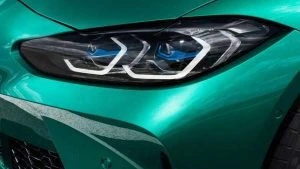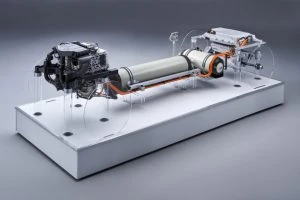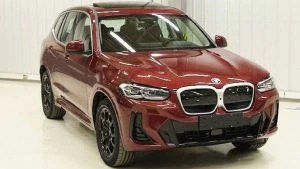BMW Brilliance

BMW has always been a favourite standout brand of mine, and BMW is forging new models and technology even as we speak. It has been a bit of a gruelling year-or-two with the covid shenanigans, and car manufactures are only one small segment of the global economic pie to have taken a sizable hit. The shortage of semiconductors has been, and still is, a problem because cars rely on these items for controlling anything from your electric windows to all the fancy driving assistance aids. However, the winds are changing, and the rebound is occurring. Luxury car marques like BMW seem to be doing very well, and even with the electronic chip shortages being a bit of an issue it seems that BMW will get through this period in fairly good shape. There is always a talking point re this special car marque; sometimes the designs might look great to some and not so flash for others, but there is always a gem being turned out from this great team of motoring designers and manufacturers. BMW cars are more often than not great to drive, good looking, practical and advanced cars.
In this covid recovery period, various chief financial officers recently mentioned that, for now, luxury marques like BMW would consciously undersupply demand levels, which seems a prudent, sensible path to take, as BMW new car prices are holding up very well – quite bullish in fact. The increased pricing power has already trickled down to the bottom lines for BMW and Daimler. Mercedes achieved a 12.2% return on sales in the last reported quarter, which was up from 8.4% in the same period in 2018 (2018 being of a period not affected by the pandemic or diesel emissions litigation costs). BMW achieved a 16% return on sales, which was up from 8.6% in 2018. BMW also reported a $5.7 billion net profit in the second quarter of this year, suggesting global auto markets are continuing to recover from the pandemic — particularly when it comes to luxury cars like BMW and Mercedes.

BMW M4 Minty Green
This is great news for BMW and car lovers in general, but what’s new in BMW’s box of tricks? A very cool thing that BMW revealed at the recent Munich Motorshow (early September 2021) was to be found in the BMW M4 corner, where this manic machine, with its impetuous acceleration, showed a jaw-dropping minty green sheen to its beautiful, sexy exterior. The M4 Competition wore a Mint Green paint job and sat upon gorgeous bronze 20-inch rims. Both of these options are available as part of the brand’s expanded BMW Individual customization line, which you can find on BMW’s online configurator, where more than 130 other paint options and eight different wheel options are available. This latest BMW M4 Competition also had a new fibre front splitter, a restyled rear bumper, a rear wing, and some unique side skirts that were all made with carbon fibre. Carbon fibre interior seating surfaces and trim pieces are also part of the online configurator. So, try before you buy!
The Munich motor show also allowed the public to preview a hydrogen-electric BMW X5 that is due to enter very-limited production in 2022. This is an exciting moment because the vehicle was first previewed in 2019 as the i Hydrogen Next concept. It’s currently in the prototype stage, and early this month it was confirmed with the go ahead, going by the name of BMW iX5 Hydrogen.

A hydrogen-electric vehicle is like a battery-electric vehicle, but instead of drawing power from electricity out of the charged battery the hydrogen-electric vehicle relies on a hydrogen fuel-cell stack to produce electricity power. BMW’s iX5 Hydrogen has the hydrogen fuel-cell positioned up front where it draws hydrogen from 2 tanks, one in the X5’s transmission tunnel and another under the rear seats. The tanks are made from carbon-fibre-reinforced-plastic and can hold about 5.9 kg of hydrogen at more than 10,000 psi. Tank filling takes only a few minutes. The hydrogen fuel-cell combines hydrogen with oxygen from the air to create electricity. This process only has water (H2O) as a by-product – Wow! The electricity primarily powers a single motor at the rear axle but is also used to charge a small battery that steps in from time-to-time to deliver extra grunt to the motor during high-load situations.

BMW iX5 Hydrogen Platform
The BMW iX5 Hydrogen will have a total system power output of 275 kW. The hydrogen fuel cell, on its own, generates about 125 kW. The vehicle’s aerodynamically shaped 22-inch wheels are wrapped in a new Pirelli tyre that is made from natural rubber and a wood-based synthetic fibre known as rayon. These two materials replace much of the petroleum-based synthetic rubbers used in modern tyres.
The extensive field testing has already started in earnest within Europe. Particular focus points have had the engineers examining how effectively the CO2-free drivetrain works in real-life conditions. Also, they are measuring metrics which include reliability, safety, and efficiency during everyday conditions to ensure that the new model is perfect for mass production. Hydrogen fuel cell technology has the potential to supplement internal combustion engines, plug-in hybrid systems, and battery-electric vehicles. The BMW iX5 Hydrogen has hydrogen tanks that can be filled quickly in only 3–4 minutes.
BMW states that the small batch of iX5 Hydrogen models that are destined to be built in 2022 will only be used for demonstration and testing purposes. BMW doesn’t expect to have any hydrogen-electric vehicles at dealerships until 2025 at the earliest and depending on the direction that the automotive markets take.
Newest off the showroom floor is the all-new BMW iX3 with its refreshed exterior design. The new BMW iX3 has a sexier appearance and introduces the M Sport Package as standard. BMW has achieved an impressive CO2 emission assessment for this next-generation iX3, and the vehicle boasts an exceptionally efficient drive system. Extensive use of secondary raw materials in the manufacture of aluminium castings and thermoplastics combines with the new iX3 boasting an absence of rare earth materials and the use of more green electricity in its production.

BMW iX3 2022
The BMW iX3 has a kidney grille that is larger still, and it has a single-piece frame that comes in Pearl-effect Chrome with blue accents to match with the BMW i styling cues. Its headlights have been made slimmer. It also boasts 19-inch black aerodynamic wheels, an automatic tailgate, adaptive suspension, a heated steering wheel, a panoramic sunroof, and Smartphone integration with Apple CarPlay and Android Auto.
BMW is a bit of a landmark in the automotive world, a benchmark, the perfect blend of performance, luxury and practicality. In the future, BMW wants to be ready to supply customers with their powertrain of choice, whether it be gasoline, diesel, battery or hydrogen. In the case of hydrogen, BMW sees it as an opportunity for customers that favour long-distance driving or who happen to live in regions without adequate battery recharging infrastructure.
I have so many favourite BMWs and other cars, including the 4.0-litre Falcons, which have rolled our roads over the last few decades of motoring, but let’s not be nincompoops and let’s embrace new ways of automotive power; let’s embrace the new BMW i technology.